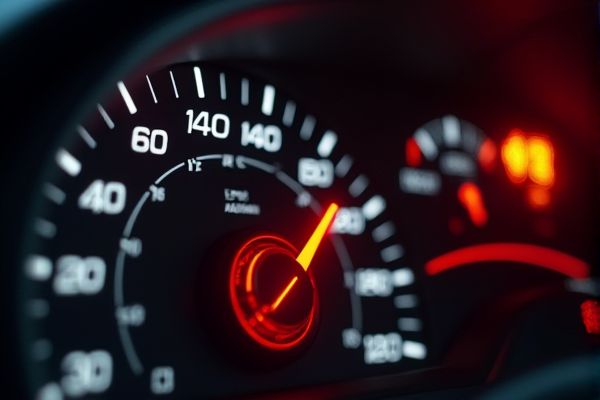
The Peugeot 207's check engine light alerts drivers to potential issues such as sensor malfunctions, emission control system errors, or faulty ignition components, signaling that the onboard computer has detected a performance anomaly. Prioritizing diagnostic data with an OBD-II scan is essential to quickly determine the root cause and address any necessary repairs for optimal engine function and safety compliance.
Peugeot 207 check engine light on meaning
Catalytic Converter Failure
The engine warning light may indicate a faulty catalytic converter, often requiring replacement.
Coolant Temperature Sensor Malfunction
A leak in the sensor can trigger the engine malfunction light and affect engine performance.
Lambda Sensor Issues
Error codes like P0131 may indicate problems with the lambda sensor, affecting engine efficiency.
Throttle Valve Sensor Problems
Faults in the throttle valve sensor can lead to poor engine performance and warning lights.
Accelerator Pedal Sensor Issues
Low signal from the accelerator pedal sensor can cause the engine light to appear.
For car users
If your Peugeot 207's check engine light comes on, immediately inspect basic items such as ensuring the gas cap is securely tightened and that fluid levels--especially oil--are within the proper range, as low maintenance can sometimes trigger the light. If the warning persists or you notice unusual engine behavior, prioritize scheduling a diagnostic appointment with a qualified mechanic to scan for fault codes and address any underlying issues without delay.
Ignoring the check engine light
Ignoring the check engine light on your Peugeot 207 can allow minor issues--like sensor malfunctions or misfires--to escalate into larger problems, reducing fuel efficiency, performance, and increasing emissions. Over time, neglect can lead to costly repairs and potential engine damage, emphasizing the importance of prompt diagnostic testing and maintenance.
How to reset?
Using an OBD2 scanner, connect to the Peugeot 207's diagnostic port (typically located beneath the steering column) to retrieve and clear fault codes, effectively resetting the check engine light while ensuring any underlying issues are identified for repair. Alternatively, if an OBD2 tool isn't available or the fault codes persist, disconnect the battery for about 15 minutes to reset the vehicle's electronic systems, remembering that this may require re-entering radio codes and other settings upon reconnection.
When a Peugeot 207's check engine light comes on, diagnostic fees generally run between $50 and $150, with repairs typically adding another $100 to $600 depending on the issue. Data suggests that most common fixes, like sensor replacements or minor engine repairs, average an overall cost of around $300, though more extensive problems can drive the total expense higher.
Future prevention
Regularly follow Peugeot 207 maintenance schedules--including timely oil changes, spark plug and air filter replacements--and ensure components like the fuel cap are secure to reduce potential engine issues that trigger the check engine light. Regular OBD-II diagnostics can quickly identify sensor or emission system faults, enabling prompt repairs and preventing the light from coming on again.
